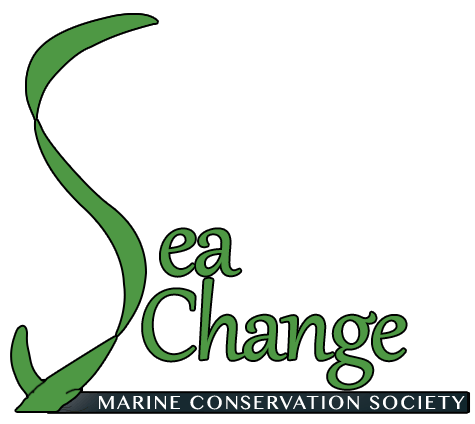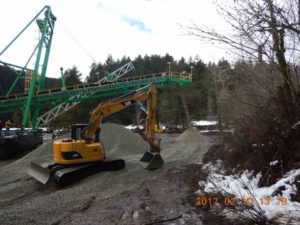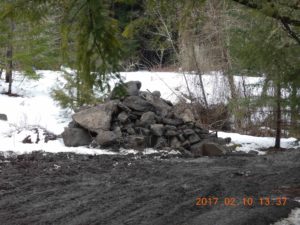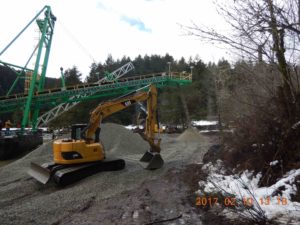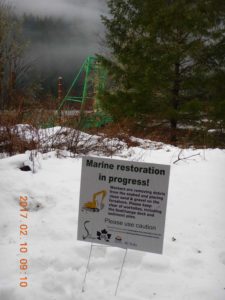Tod Inlet Beach Enhancement Project
SeaChange Marine Conservation Society, in partnership with the Tsartlip First Nation and BC Parks, has embarked on a beach enhancement project. Visit the Place of the Blue Grouse page to learn about some of the history of the site. The restoration site was a highly degraded unnatural shoreline. This restoration is a natural progression for shared vision of a renewal of health for the inlet (also see eelgrass restoration).
The project began with removal of underwater debris, some of it quite large, in locations based on underwater side scan surveys. Removing debris from the seabed will increase marine life habitat and food supplies for the marine organisms from copepods to salmon. This work is part of a larger restoration project in SṈIDȻEȽ (Place of the Blue Grouse). Visitors to the area will have seen volunteers removing invasive plant species and replanting sites with the native species once found here.
Walking hand in hand with First Nations and BC Parks, SeaChange is continuing the restoration of the estuary in SṈIDȻEȽ. This video made with Simon Smith Sr. and Ian Bruce tells the story of the beach enhancement project completed in 2017.
The three phases of the beach enhancement project can be seen below. The method used to enhance the beach is called beach nourishment. This is a soft shore approach for low wave energy shores that allows the tides to move the gravel material rather than erode the shoreline. Finer sand material was deposited on the back shore. Logs will be placed near the slope and more native plants will be installed behind the logs. Over time, we will witness a diversity of marine life on the shore once devoid of life. As sea level increases, more of the shore will be underwater providing a different kind of habitat for fish and the life they feed upon. This is an example of resiliency and adaptation to present and future climate changes.
This work will provide erosion protection from rising sea levels, and gives one example of how individual homeowners can use these “softshore” techniques to protect their foreshore areas in low wave energy areas without resorting to damaging methods such as rock walls along the waterfront.
This time-lapse video footage is the story of the restoration work done on the shore of Tod Inlet (SṈIDȻEȽ) in early February, 2017. Despite snowy conditions, by the evening of February 10th, 350 cubic m and 2250 cubic m of clean sand and gravel were deposited. This was done in partnership with the Tsartlip First Nations and BC Parks to create clean surface areas and habitats for marine life and recreationists, and demonstrates how the placement of sediment on the shore in areas of low wave energy can slow down the erosional effects of rising sea levels.
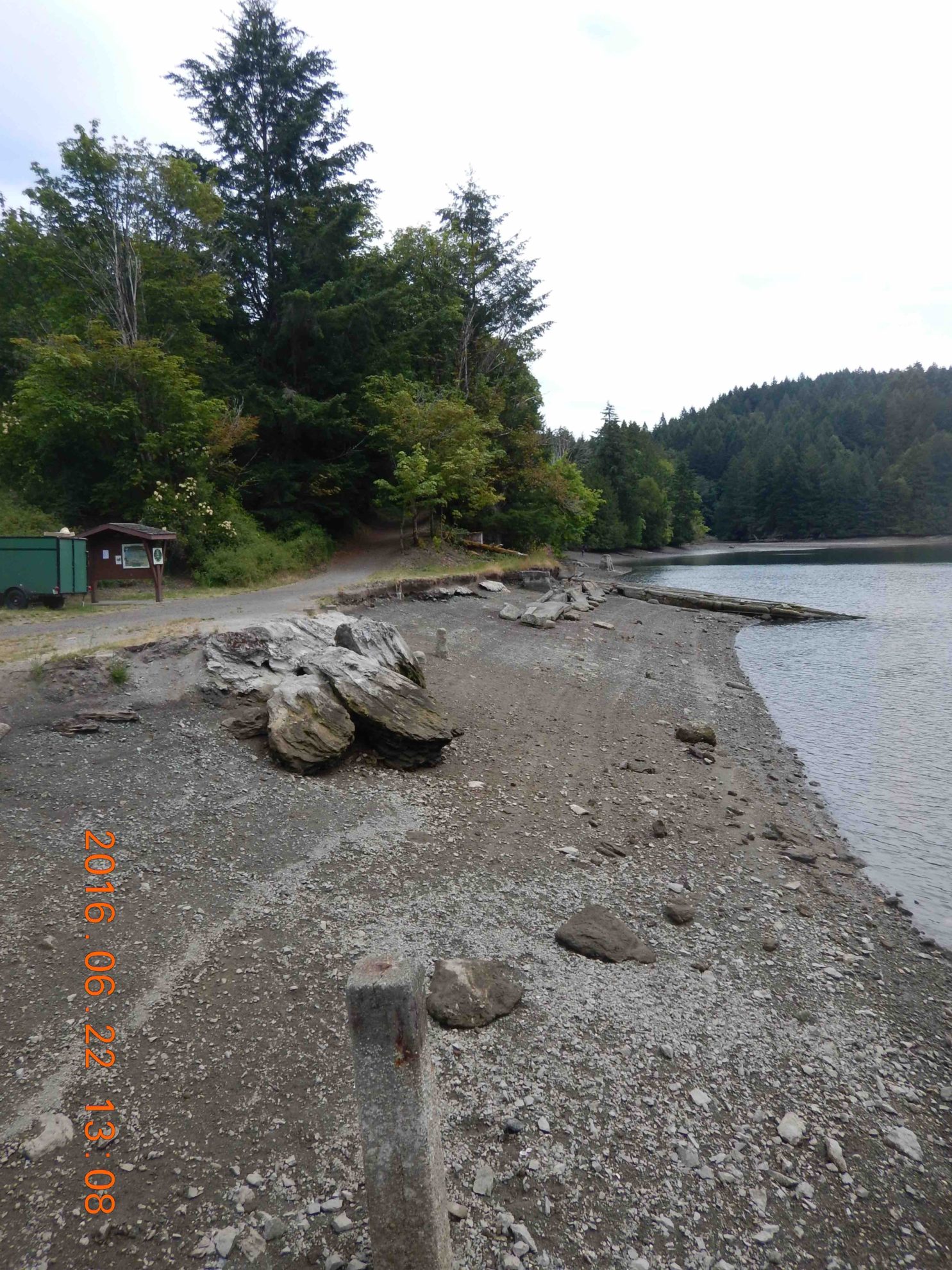
Before
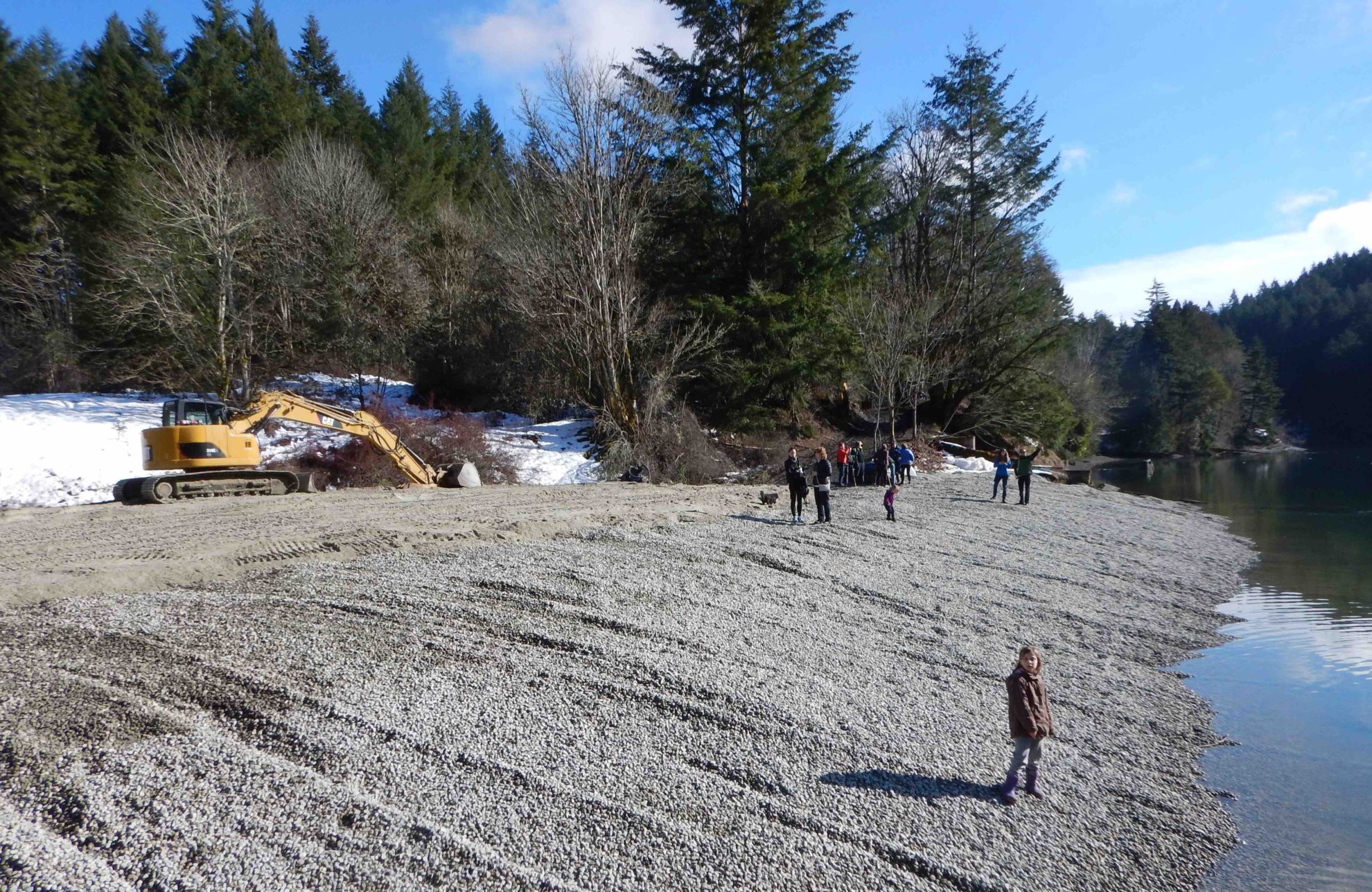
After
- Chunks of concrete
- Machinery
- We’re working!
